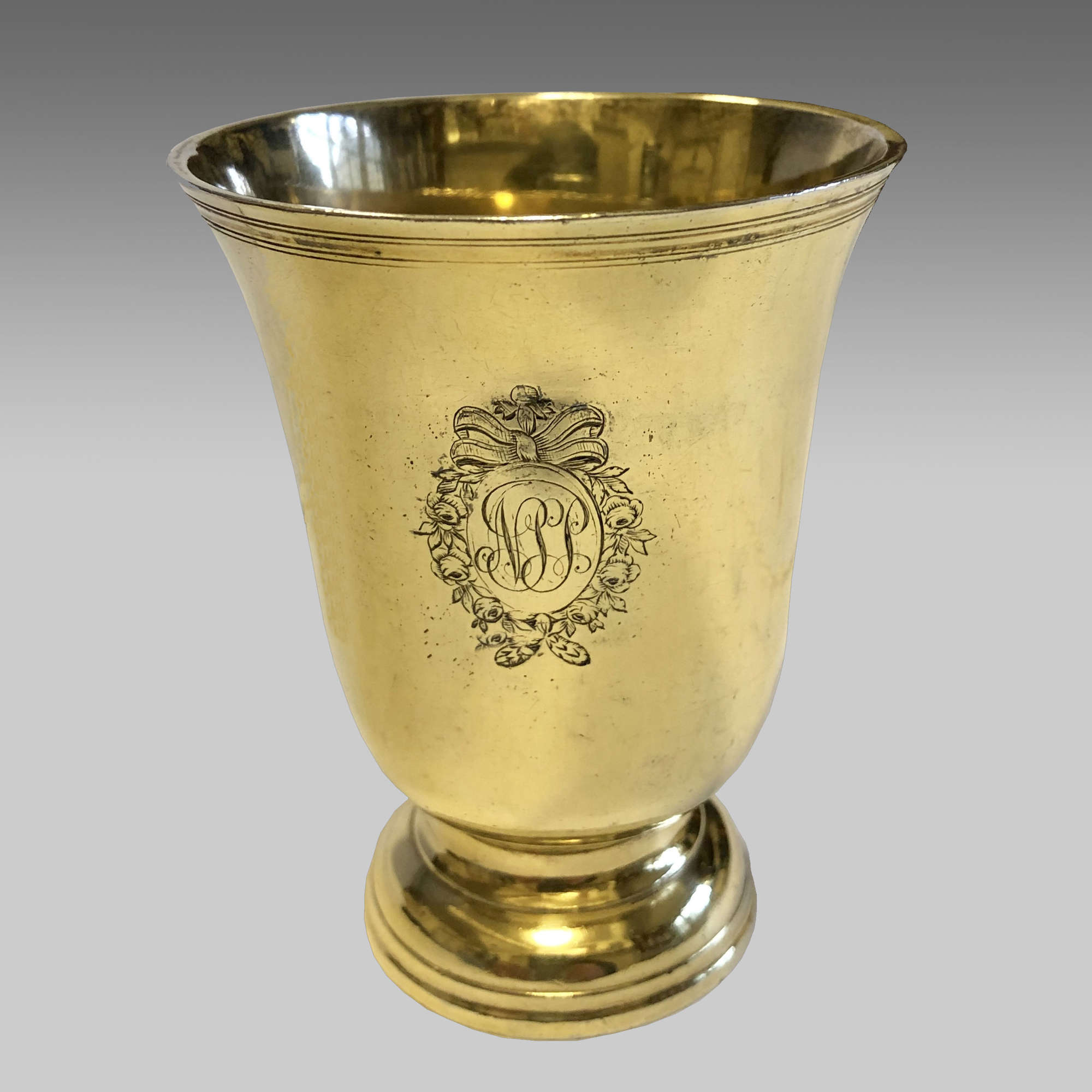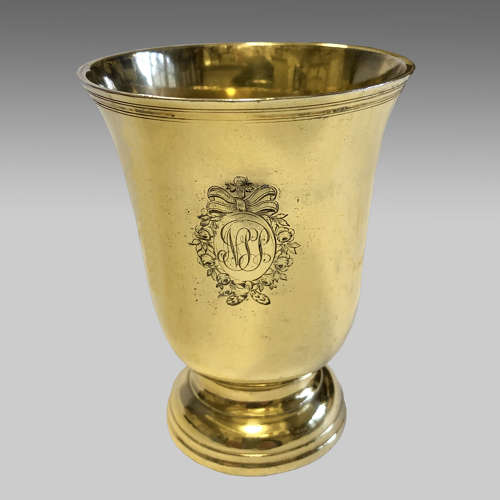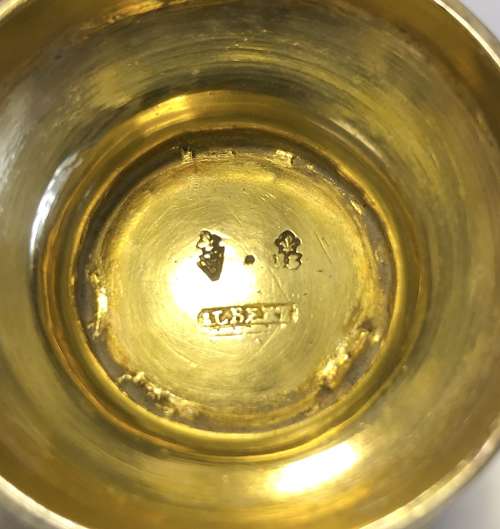


Fine 18th century antique French silver gilt beaker
Delivery Quote Request
Please fill in the form below to request a delivery quote from Baggott Church Street Ltd.
Contact Baggott Church Street Ltd
 Gloucestershire, United Kingdom
Gloucestershire, United Kingdom
Simply fill in the below form to get in touch with Baggott Church Street Ltd regarding this item.
About this item
Fine antique French silver gilt beaker, bell shaped and entirely gilded, the reeded, flared rim with ogee bowl and resting on a cyma recta foot.Monogram for NSP within a beribboned and floral cartouche.
Maker’s mark to base ALBERTI and two further marks, a fleur de lys above 13 for Strasbourg (1750 - 1796) and a fleur de lys over a V, the date letter for 1771/2.
Height 4” (10cm) Diameter 3” (8cm)
Strasbourg, France 1771/1772
Jacques Henri Alberti was born in Bärenthal in 1730 and was in partnership with the renowned silversmith Jean-Louis Imlin 111 from 1756 until 1769, when, on the
latter’s death, he became head of the workshop. Alberti married Imlin’s nice,
Catherine-Salomé Emmerich, in 1765. Patronised by the highest in society, Imlin and Alberti were commissioned in 1768 to create the entire dinner service of Elizabeth Auguste, Electress of Bavaria and the Palantinates, for her home - the chateau of
Oggersheim. His work is represented in various museums worldwide including the Museum of Fine Arts in Boston, The Palatinate Museum of Heidelberg and the
Museum of Decorative Arts, Strasbourg.
Vermeil was developed in mid 18th century France and was considered a luxury, attracting an international clientele of royalty and aristocracy. A coating of gold was adhered to sterling silvering mercury in the ‘fire-gilding’ process. Due to the dangers of this process that were discovered by scientists at the beginning of the 1800s, the practice was soon prohibited and subsequently very little was produced after this time. Jacques Henri Alberti, master goldsmiths was considered one of the foremost and talented goldsmiths in Strasbourg in his day and, according to the corporate system in place before the FrenchRevolution, set himself up alongside similar specialists in their own quarter in the town of Strasbourg - Le Carré d’Or, or the gold quarter. The home that he had built in 1785, no. 14 on the Rue des Orfèveres (Goldsmiths), came to be known as The Storks, identified by the extraordinary carving above the door, which displays two storks in a bed of reeds. Alberti was recognised in his time for his innovative naturalistic taste in decoration on his pieces and no doubt defined himself with this decorated entrance.
Additional Information
1079 (AB-22249)
H: 4" (10.2 cm)Di: 3" (7.6 cm)
18th Century
![]() Gloucestershire, United Kingdom
Gloucestershire, United Kingdom












